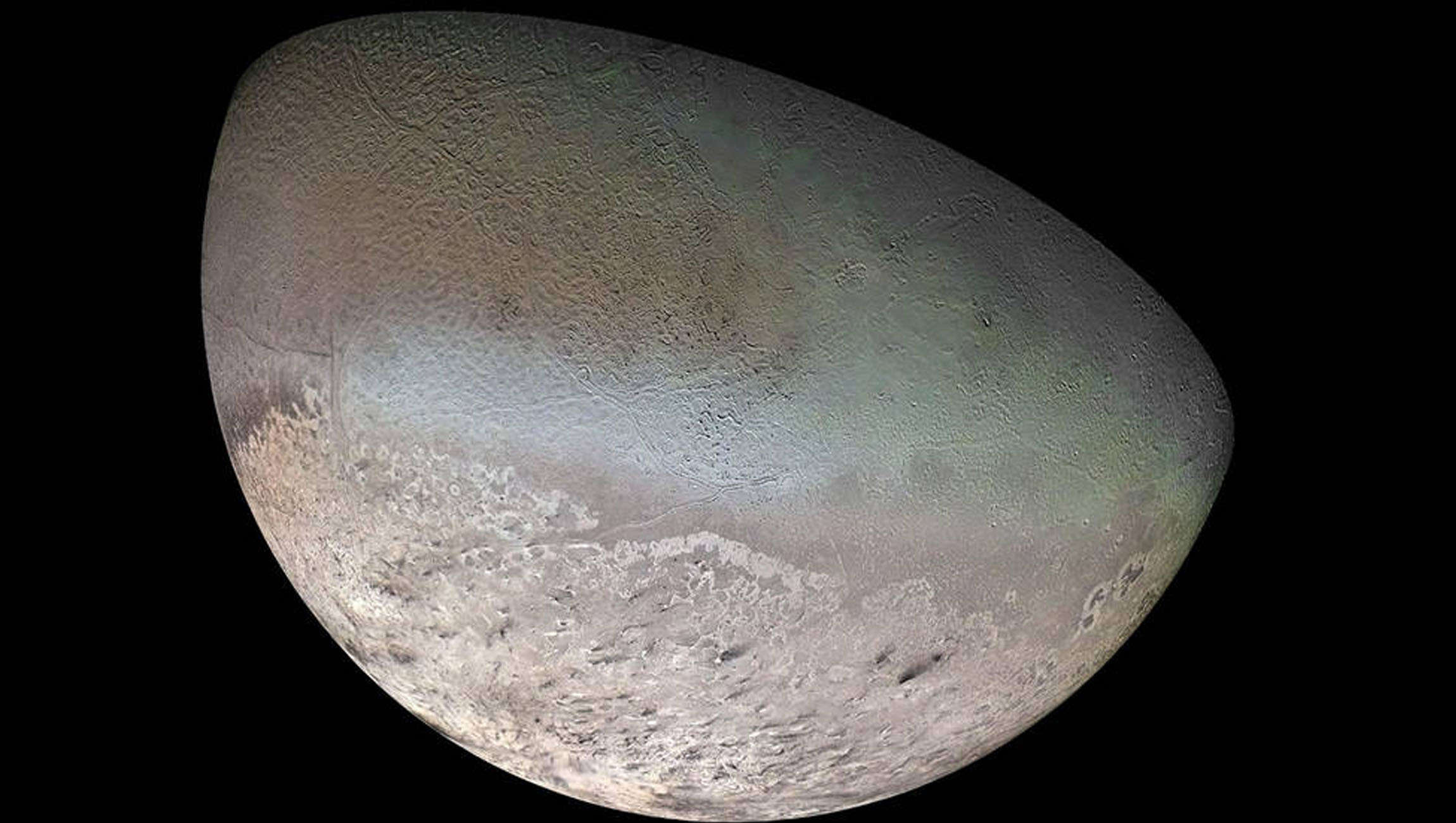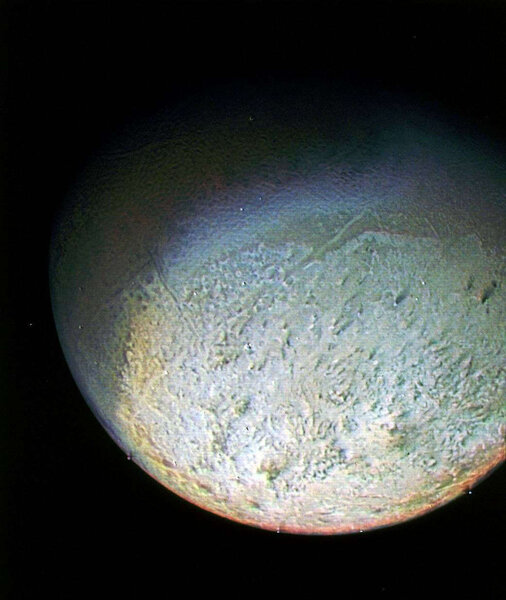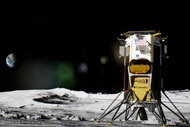Create a free profile to get unlimited access to exclusive videos, sweepstakes, and more!
NASA proposes mission to Neptune's bizarre moon Triton, which could be hiding a subsurface ocean

When Voyager 2 became the only spacecraft to ever pull off a flyby of Neptune’s largest moon Triton, it revealed the already mysterious orb was even more of an enigma.
Trident is the proposed NASA mission seeking to answer those questions. Named for both the Greco-Roman sea god Neptune’s trident (like Aquaman’s), it is one of the mission concepts under NASA’s Discovery Program that could become a reality if selected. Trident would take a the three-pronged approach to studying Triton. It would find out if this frozen moon has a subsurface ocean that is potentially habitable, explore previously uncharted territory, and investigate what is going on with those icy plumes the moon sprays into space.
"Triton has always been one of the most exciting and intriguing bodies in the solar system," said Louise Prockter, director of the Lunar and Planetary Institute/Universities Space Research Association in Houston and Trident principal investigator. "I've always loved the Voyager 2 images and their tantalizing glimpses of this bizarre, crazy moon that no one understands."
Neptune’s strange moon is thought to have been a Kuiper belt object that got pulled in by the planet’s gravity millions of years go. If it really does have a subsurface ocean, that ocean is thought to have formed after Triton started orbiting Neptune, possibly from tidal heating. Triton must have been a completely frozen ball of ice when Neptune claimed it. If a satellite has a short orbit period around an object of much greater mass, this creates an enormous amount of friction, which generates heat, inside the satellite. Frozen satellites are not unique in the solar system, but Triton is thought to be the most likely to have had tidal heating influence its evolution.
What about the supposed cryovolcanism? No one will know whether the stuff ejected into space by Triton is actually water like that in the plumes of Jupiter’s moon Europa and not some other liquid chemical until that can be proven by closer observation. Saturn’s moon Enceladus also releases plumes, while its other moon Titan is flowing with liquid methane and ethane. NASA scientists speculate that Triton’s plumes are a result of convection, or process of hot, less dense liquid deeper inside the moon rising to above the colder and denser liquid, gushing through its icy crust. Triton might be habitable if that liquid is water, at least by the standards of life as we know it, though that isn’t completely reliable. There are creatures right here on Earth that defy those standards.
Even after Voyager 2, most of Triton’s surface area remains unexplored. Only 40% has been observed with 60% still unknown. The conceptual spacecraft would be equipped with a probe to elucidate whether there is a subsurface ocean on Triton by determining if the moon’s magnetic field is disrupted by an electric current that such an ocean would generate. Its camera would photograph plumes in action. Other instruments would get an idea of the atmosphere. The Trident team is especially interested in Triton’s hyperactive ionosphere, the part of its atmosphere full of charged particles. Triton is too far from the Sun for solar energy to charge those particles. Nobody knows what is charging them.
The self-renewing surface of Triton (never mind its weird topographical features) is another ancient mystery. When the surface of a celestial body is only 10 million years old in a star system that has been around 4.6 billion years, you do start to wonder.
NASA will select up to two missions to move forward with by next summer. If Trident is one of them, it would have to launch in October 2025 to take advantage of Jupiter aligning with Earth in such a way that the gas giant’s immensely powerful gravity would slingshot it to the far reaches of the solar system. That opportunity only comes around once every 13 years. Trident also better arrive at Triton before 2040 if it is going to find out what is behind the icy plumes, or else the sun will move too far north for the next hundred years. Most of us will be dust by then unless there is some unreal breakthrough in cryogenics.
"Triton is weird, but yet relevantly weird, because of the science we can do there," said Trident project scientist Karl Mitchell. "We know the surface has all these features we've never seen before, which motivates us to want to know 'How does this world work? As we said to NASA in our mission proposal, Triton isn't just a key to solar system science — it's a whole keyring.”















